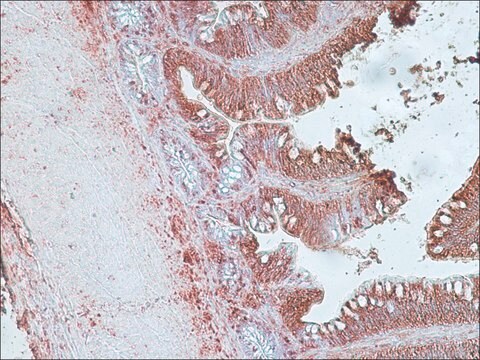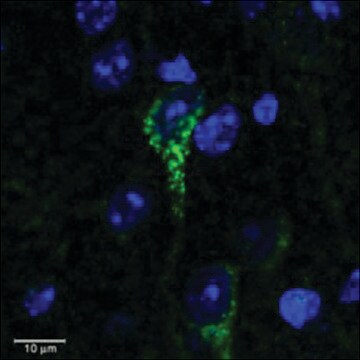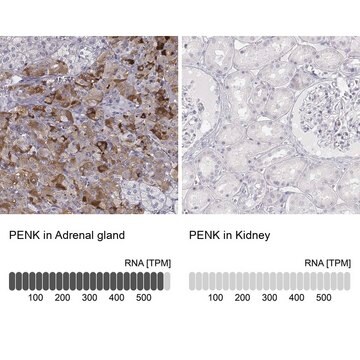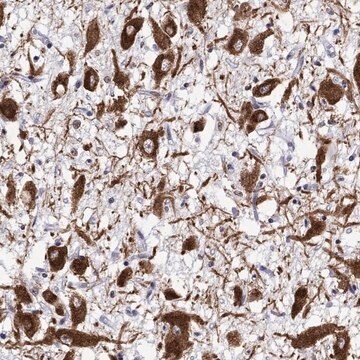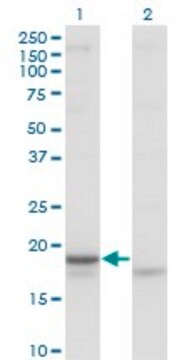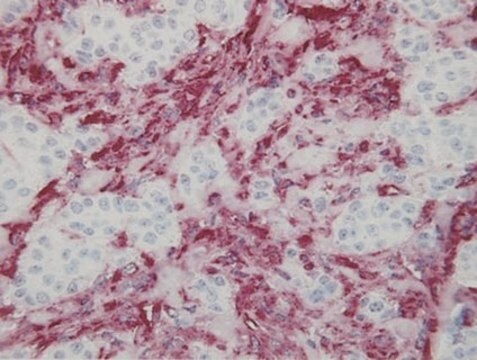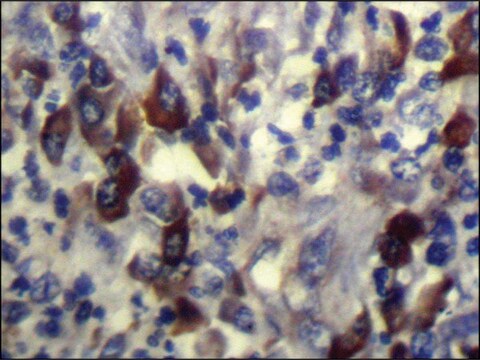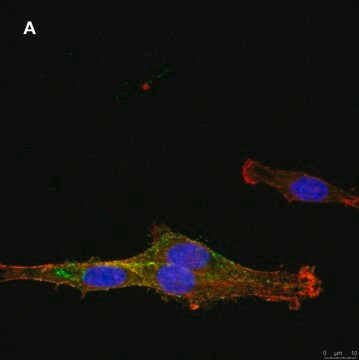SAB1405656
Anti-CRH antibody produced in mouse
purified immunoglobulin, buffered aqueous solution
Synonim(y):
CRF
About This Item
Polecane produkty
pochodzenie biologiczne
mouse
białko sprzężone
unconjugated
forma przeciwciała
purified immunoglobulin
rodzaj przeciwciała
primary antibodies
klon
polyclonal
Formularz
buffered aqueous solution
masa cząsteczkowa
antigen ~21.4 kDa
reaktywność gatunkowa
human
metody
western blot: 1 μg/mL
numer dostępu NCBI
numer dostępu UniProt
Warunki transportu
dry ice
temp. przechowywania
−20°C
docelowa modyfikacja potranslacyjna
unmodified
informacje o genach
human ... CRH(1392)
Opis ogólny
Immunogen
Sekwencja
MRLPLLVSAGVLLALLPCPPCRALLSRGPVPGARQAPQHPQPLDFFQPPQSEQPQARPVLLRMGEEYFLRLGNLNKSPAAPLSPASSLAGGSGSRPSPEQATANFFRVLLQQLLPRRSLDSPAALAERGARNALGHQEAPERERRSEEPPISLDLTFHLLREVLEMARAEQLAQAHSNRKLMEIIGK.
Postać fizyczna
Nie możesz znaleźć właściwego produktu?
Wypróbuj nasz Narzędzie selektora produktów.
Kod klasy składowania
10 - Combustible liquids
Klasa zagrożenia wodnego (WGK)
WGK 1
Temperatura zapłonu (°F)
Not applicable
Temperatura zapłonu (°C)
Not applicable
Wybierz jedną z najnowszych wersji:
Certyfikaty analizy (CoA)
Nie widzisz odpowiedniej wersji?
Jeśli potrzebujesz konkretnej wersji, możesz wyszukać konkretny certyfikat według numeru partii lub serii.
Masz już ten produkt?
Dokumenty związane z niedawno zakupionymi produktami zostały zamieszczone w Bibliotece dokumentów.
Nasz zespół naukowców ma doświadczenie we wszystkich obszarach badań, w tym w naukach przyrodniczych, materiałoznawstwie, syntezie chemicznej, chromatografii, analityce i wielu innych dziedzinach.
Skontaktuj się z zespołem ds. pomocy technicznej